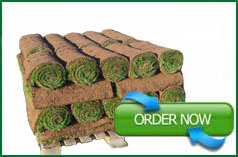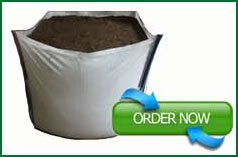Feeding your lawn
Make sure the turf is fertilized at least twice a year. (Spring & Autumn)
PH levels
Lawn fertilizer will only work if the soil PH levels are between 6-7.5. Slightly acidic to neutral. If the PH is outside of this guidance, the nutrients in the soil will not become available to the lawn so easily and can also cause lawn disease and moss.
What is NPK?
NPK is made up of Nitrogen, Phosphorous, and Potassium. The nitrogen helps the turf to grow, Phosphorous helps root strength and establishent and potassium helps with turf health and to harden the grass throughout winter. Iron, Magnesium and Sulphur also benefit lawn health.
You can use an all in one weed and feed but we would recommend using a lawn fertilizer instead, and then using a selective weed killer if required.
Always use the fertilizer at least 2 weeks before the weed killer. Read the instructions carefully and don't use any more than the recommended amount. Investing in a granular spreader is advised to obtain a uniformed covering. Double check those instructions!
 How to use a fertilizer spreader
How to use a fertilizer spreader
Fertilizer spreaders are a quick and easy way of applying your lawn feed whist giving your lawn an even layer of nutrients. You can pick up a spreader most local garden centers. The Most common fertiliser spreader is the broadcast spreader, more commonly known as the rotary spreader. Broadcast spinners can be powered either by a motor or by the spreader’s own wheels.
Firstly, make sure you fill up your spreader on a hard surface, this is to make sure you don’t spill any extra fertilizer on your lawn.
Follow the instructions on your fertilizer so you can correctly choose which numbered setting your spreader should be on.
Make sure you walk at a slow and steady pace. Your walking speed affects how wide and how much product the broadcaster throws.
When applying the fertilizer to the lawn, we suggest walking up and down the garden with the spreader taking reference points so that you don’t cover the same area twice. Having the spreader set on the minimum setting should allow you to carry out a second pass in a different direction to ensure that you apply the correct and even coverage.
Each time you are ready to turn or need to stop, make sure to close the flow leaver. This avoids waist of fertilizer and damaging the lawn from over treatments.
Quick and Slow release fertilizers
Fertilizers are applied to lawns to deliver supplemental nutrients that will help improve its overall health. There are two types of nitrogen options available in fertilizers, quick- and slow- release nitrogen.
Quick Release
Quick-release nitrogen in fertilizers makes nitrogen immediately available to your lawn. This encourages a rapid recovery from nutrient deficiency, its does so by stimulating quick shoot growth and swift greening. Quick release fertilizers are more cost efficient than slow release fertilizers. Unfortunately quick releasing fertilizers rapidly deteriorate from the soil through the leaching of nitrates; they last only two to four weeks; and if they are over applied they can cause burning to the grass plant.
Slow Release
Slow-release fertilizers release a steady amount of nitrogen to your lawn over a longer period of time. Slow release fertilizers can last between 6 to 8 weeks, meaning you don’t have to apply them as frequently. They also provide more uniform grass growth. An advantage of the slow release fertilizer is that it will provide a steady rate of nitrogen which will maintain your lawns health throughout the season. It’s also less likely to burn your lawn. It is more expensive than Quick-release fertilizers (but may be a less expensive option if less applications are required).
Fertilizing in the Spring/Summer
Fertilizing your lawn in the spring you should use a quick acting nitrogen based fertilizer.
Fertilizing in the Autumn/Winter
Fertilizing your lawn in the winter you should use a low nitrogen, high potassium fertilizer with some iron.














.jpg)